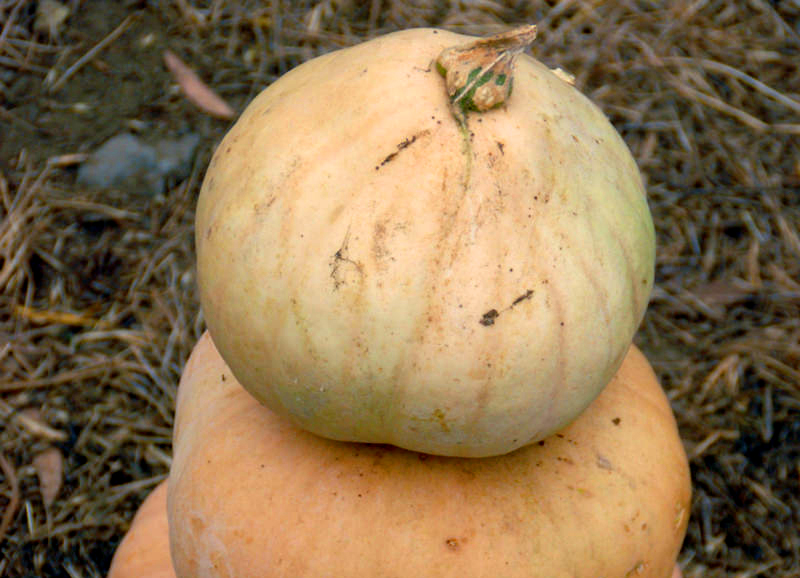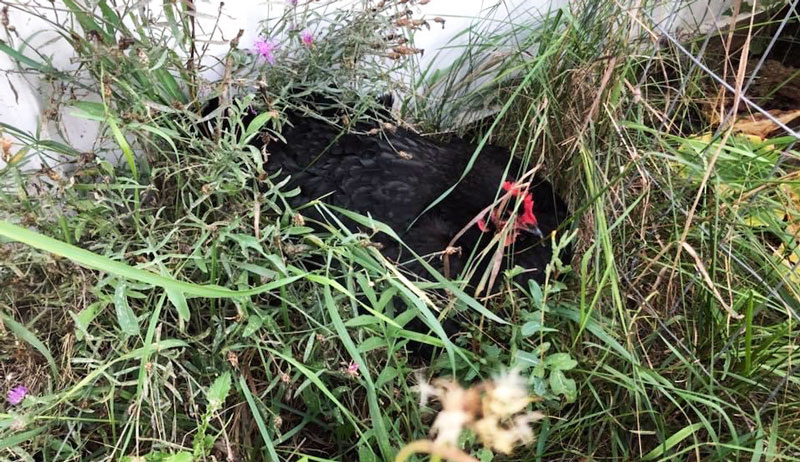Got a missing chicken? For those who keep a backyard flock in an urban or suburban setting, a missing bird seems unthinkable. How could a chicken possibly get out of its tidy, contained coop-and-run combo or its fenced backyard?
For those of us who live in a rural residential or agricultural zone, however, discovering a member of our flock is missing at lock-up is not as uncommon as you’d think. Combine free-ranging with a chicken’s innate curiosity and you’ll have plenty of reasons why you might be short one chicken.
If this happens to you when you’re closing up your coop for the night, don’t panic. Take a deep breath. Then take on one or more of these five suggestions.
#1 Is Your Bird Having a Slumber Party?
If you raise multiple flocks of chickens, chances are your birds have not only noticed each other but have also communicated back and forth through clucks, warbles, crows and other vocalizations. Commonly, these calls keep each other informed of the status of their territory. This is especially true if you keep more than one rooster.
Occasionally, your birds’ chatter may actually be more neighborly. Chickens will sort out where each of them stands in the expanded poultry society comprised of all your flocks. If you discover that one of your hens is missing, check your other coops.
I’ve lost count of how many times we’ve found members our BBS Orpington flock peacefully snoozing on the perch in the Buff Orpington coop and Buffs on the Blue Orpington perch. If your birds are having a sleepover , there’s no need to disturb them (unless roosters are present and you breed separate varieties).
Just sort everyone back out when you release them in the morning.
#2 Your Missing Chicken Could Be a High Flyer
With few exceptions, chickens prefer their roosts several feet off the ground. According to Dr. Richard Fulton, a poultry science professor at Michigan State University, the inclination to roost up high originates from an instinct to stay out of reach of ground-based predators.
Most birds are content with the height of their henhouse perches. But others look for higher ground.
Our Dutch Bantam, Cutie, and our Golden Sebright, Dennis, always perched up in the rafters of their coop, well above the heads of the rest of their flock. Dennis went missing one evening, and I spent several hours searching the surrounding forests for that tiny bird.
I finally gave up and headed back to the house. Then I caught an orange gleam high up in one of our maples. Sure enough, there was Dennis, cozy as could be and snoozing away.
If your missing chicken is a bantam or a breed that flies well, such as Ameraucana, Lakenvelder or Fayoumi, get out your flashlight and search in the boughs of nearby trees. Chances are your lost chook is roosting on a low branch.
#3 Mamma Mia! (It Could Be Broodiness)
Even if our coops are equipped with nest boxes, sometimes a girl in Mama Hen mode wants more privacy than we provide. Instead of setting eggs within the safety of their henhouses, these ladies venture out to find brooding grounds of their own.
Ten years ago, our Easter Egger, Keynoter, went missing from release until lock-up every day for more than two weeks. I finally tailed her to the woods on the southeast corner of our property. Here I discovered her—and her clutch of 18 eggs—tucked out of sight beneath a fallen tree.
Our Black Orpington, Fitz, pulled a similar stunt four years ago, except she did not return at night. We’d given her up for dead… until the weekend we were weeding around our pole barn. There was Fitz, all fluffed up and growling at us from beneath our overgrown rhubarb, where she was brooding nine eggs.
We were fortunate that our hens weren’t overly adventurous. Mari, a local breeder I know, lost her award-winning Salmon Faverolle hen one summer evening a few years back. Her family searched everywhere for the sweet-tempered hen, to no avail.
About three weeks later, that Faverolle reappeared, trooping out of the forest and looking very worn, ratty and grumpy … with a troop of chicks accompanying her.
If your missing bird is a hen who has demonstrated a penchant for brooding, check under shrubs and bushes, beneath fallen trees and behind air-conditioning units.
Look inside old tires, too. That’s where we found Ebony Orpington and her egg-filled nest.
#4 A Missing Chicken Could Mean Predatory Danger
Unfortunately, sometimes our birds don’t leave of their own accord. Chicken predators exist pretty much anywhere chickens live, especially if you live in a suburban, rural or agricultural area.
While many predators leave behind vivid evidence of their visits, some grab and go with minimal disruption. If your hen seems to have vanished without a trace, chances are it was carried off by a bobcat, fox or coyote… or by a hawk or owl.
Each of these predators prefers to carry off their prey versus kill and eat it in situ.
Years ago, our Buff Orpington girl, Buttercup, disappeared without a trace. My husband, Jae, and I hadn’t mowed recently, however. I managed to track a trail of disturbed tall grass into the woods and right up to a fox’s den dug out under a fallen tree.
Sure enough, Buttercup’s legs were sticking out of the entrance. The fox was nowhere in sight, so we retrieved our poor girl and gave her a proper burial. If your chicken has seemingly disappeared, she may have been the victim of a predator.
#5 Don’t Give up If Your Chicken Goes Missing
If your headcount is off at lock-up or at any other time and you’ve already exhausted the steps outlined above, don’t give up hope just yet. Call your neighbors and ask them to keep an eye open for your missing bird.
(Our Henrietta once decided to relocate herself to the grassy backyard of neighbors about a half mile to the north.)
Carefully check your road for signs of a chicken unsuccessfully trying to cross a road. Inspect your garage, garden shed and any other structure on your property and on your neighbors’ property, too. If you belong to a local poultry group, put out the word—and share a photo, if you have one—that your chicken is missing.
The more people searching, the more chances you’ll find your bird.
This article about what to do about a missing chicken was written for Chickens magazine. Click here to subscribe.



















